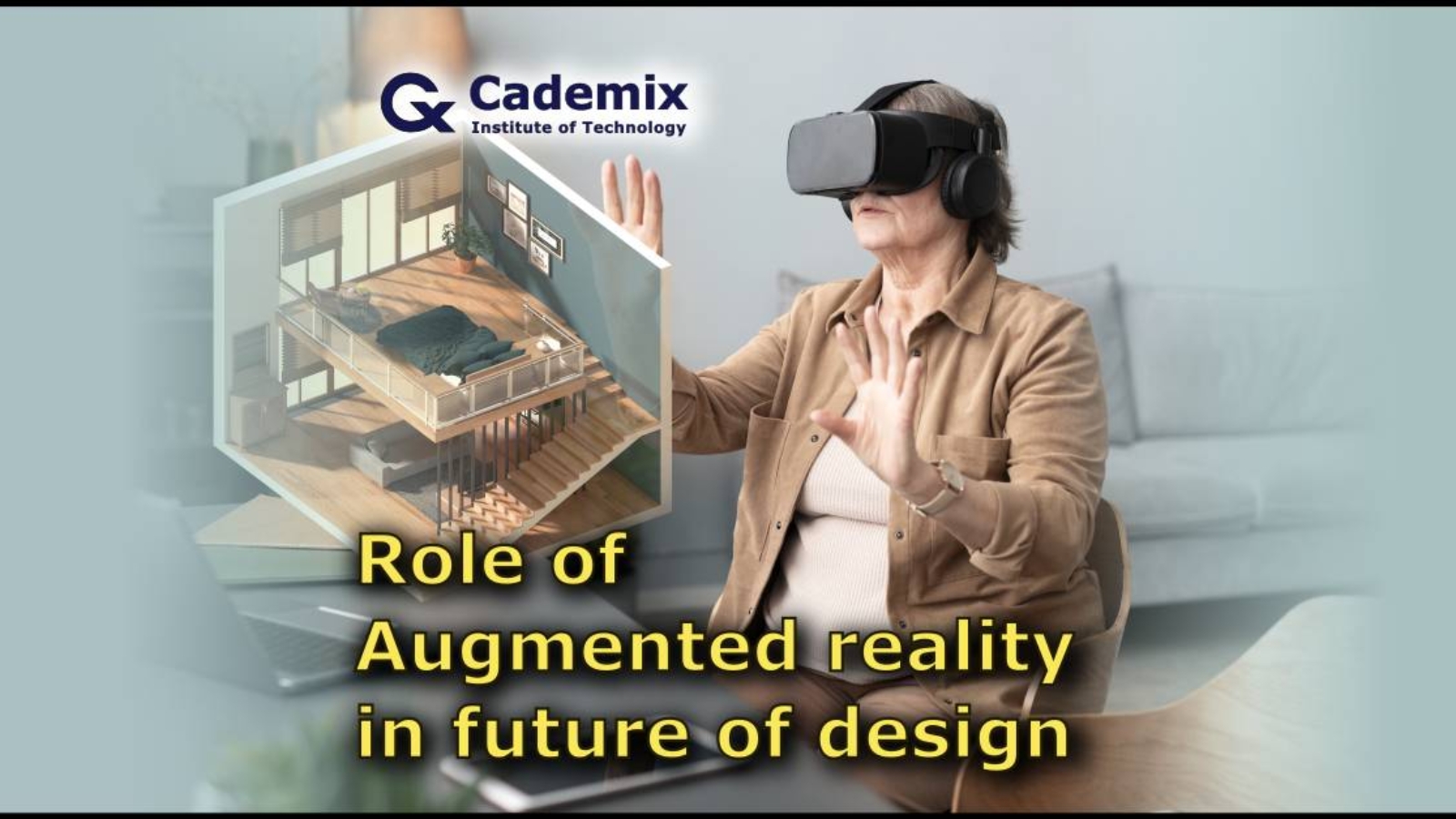The Role of Augmented Reality in the Future of Design is pivotal, reshaping creative processes and setting new industry standards. This exploration reveals AR’s profound impact on collaboration, innovation, and user engagement in design. Through case studies and expert insights, discover how AR drives design evolution and unlocks limitless possibilities for the future.
By Samareh Ghaem Maghami, Associate Technical and Interior Designer at Cademix Institute of Technology
Introduction to Augmented Reality in Design
In the fast-paced realm of design, where innovation drives progress, augmented reality (AR) emerges as a transformative tool, poised to redefine the creative landscape. At its core, augmented reality seamlessly merges digital elements with the physical world, offering immersive and interactive experiences that transcend conventional design boundaries. As we embark on this journey to explore the role of augmented reality in shaping the future of design, it’s essential to first establish a foundational understanding of what AR entails and its historical significance in the design sphere.
Definition of augmented reality (AR)
Augmented reality, often abbreviated as AR, refers to a technology that overlays digital information and virtual objects onto the real world, thereby augmenting the user’s perception of reality. Unlike virtual reality (VR), which immerses users in entirely digital environments, AR enriches the physical world with digital enhancements, blurring the line between the virtual and the real.
A brief history of Augmented Reality in design
While the concept of augmented reality may seem like a product of the digital age, its roots can be traced back several decades. Early experiments with AR date back to the 1960s, with notable milestones including Ivan Sutherland’s groundbreaking work on the “Sword of Damocles,” considered one of the earliest AR head-mounted displays. Over the years, AR technology has undergone significant advancements, with milestones such as the development of marker-based AR systems and the introduction of mobile AR applications, paving the way for its integration into various design disciplines.
Importance of Augmented Reality in shaping the future of design
As technology continues to evolve at an unprecedented pace, the role of augmented reality in the future of design becomes increasingly significant. AR holds the potential to revolutionize design processes, enhance user experiences, and drive innovation across diverse industries, from architecture and interior design to product development and beyond. By bridging the gap between the physical and digital worlds, AR empowers designers to envision, iterate, and communicate their ideas with unparalleled clarity and efficiency, setting the stage for a new era of design excellence.
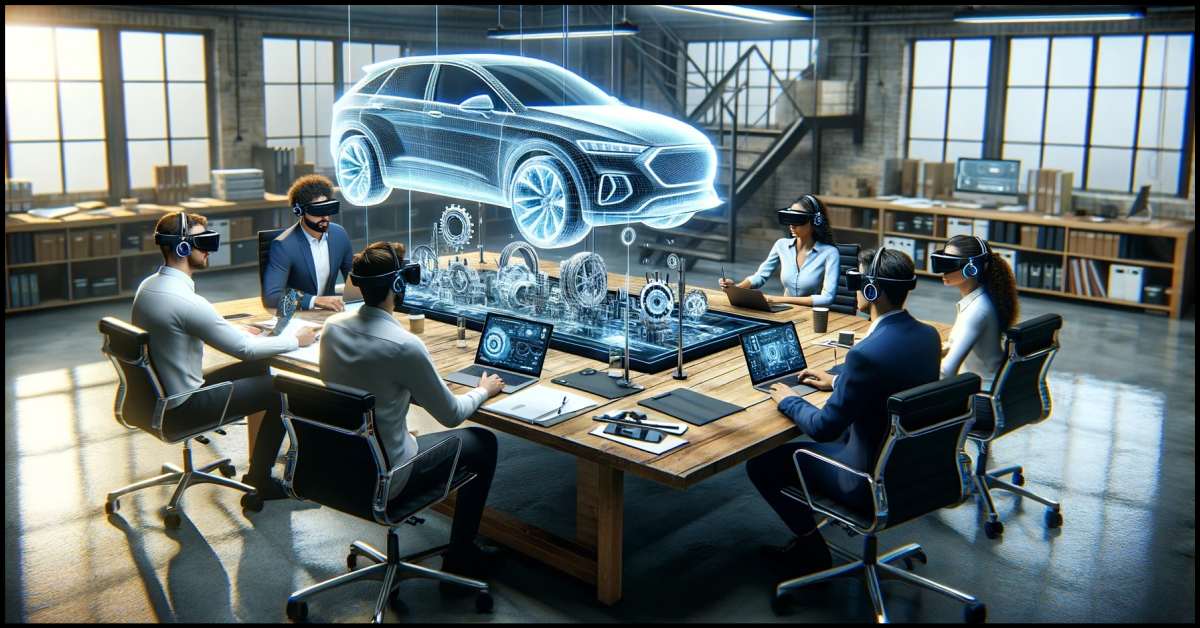
Transformative Potential of AR in Design
In the dynamic landscape of design, augmented reality (AR) stands as a revolutionary technology, poised to redefine the very essence of creative expression. As we explore the transformative potential of AR, we unravel its ability to enhance user experiences, shatter traditional design limitations, and pave the way for a future where imagination knows no bounds.
Enhancing User Experiences: through Immersive Interactions with Augmented Reality
Augmented reality transcends the realm of conventional design by offering users immersive and interactive experiences that blur the lines between the physical and digital worlds. By overlaying digital content in the real environment, AR transforms static designs into dynamic experiences, engaging users on a profound level. From interactive product demonstrations to immersive storytelling, AR elevates user experiences to unprecedented heights, setting the stage for a future where engagement is paramount.
Breaking Design Limitations: AR Technology Redefining the Future
The advent of AR technology heralds a paradigm shift in design, enabling creators to break free from the constraints of traditional mediums and methodologies. With AR, designers can unleash their creativity without the limitations of physical space or material constraints. Whether it’s exploring futuristic architectural concepts or envisioning avant-garde fashion designs, AR empowers designers to push the boundaries of what’s possible, opening new avenues for expression and innovation.
Case Studies: Successful Integration of AR in Design Projects
Across various industries, forward-thinking designers are harnessing the power of AR to revolutionize their creative processes and deliver unparalleled experiences to their audiences. From retail brands implementing AR-powered virtual try-ons to museums offering immersive exhibits, the applications of AR in design are as diverse as they are transformative. Through in-depth case studies, we examine how AR is seamlessly integrated into design projects, driving engagement, and leaving a lasting impression on users.
Discussing the Role of Augmented Reality in Design Evolution
As we delve deeper into the transformative potential of AR in design, it becomes evident that its role extends far beyond the present moment. The keyword “Role of augmented reality in the future” underscores the pivotal role that AR plays in shaping the future of design. By embracing AR as a catalyst for innovation and exploration, designers are not only redefining the creative process but also charting a course toward a future where design knows no bounds.
Collaboration and Communication in Design with AR
In the dynamic world of design, collaboration, and communication are the cornerstones of innovation and creativity. Augmented reality (AR) emerges as a powerful tool, revolutionizing how multidisciplinary teams collaborate, communicate, and innovate in design processes. Let’s explore how AR is reshaping the future of design by fostering seamless collaboration and communication among stakeholders.
Facilitating Real-Time Collaboration: Multidisciplinary Teams Leveraging AR
AR transcends geographical boundaries, enabling designers, architects, engineers, and other stakeholders to collaborate in real-time regardless of their physical locations. By overlaying digital information onto physical spaces, AR facilitates dynamic brainstorming sessions, enabling teams to visualize concepts, provide feedback, and iterate designs collaboratively. This real-time collaboration not only accelerates the design process but also ensures that all voices are heard, leading to more innovative and inclusive outcomes.
Overcoming Geographical Barriers: Virtual Meetings Empowered by AR
Traditional design collaboration often faces challenges due to geographical barriers, limiting the participation of remote team members and clients. AR-enabled virtual meetings bridge this gap by creating immersive, shared virtual spaces where participants can interact with 3D models, sketches, and prototypes in real-time. Whether it’s presenting design concepts to clients halfway across the globe or conducting virtual design reviews with distributed teams, AR transforms distant collaboration into a seamless and engaging experience.
Enhancing Communication: Designers, Clients, and Stakeholders Engaged with AR
Effective communication is essential for successful design projects, yet conveying complex ideas and concepts can often be challenging. AR simplifies communication by visualizing abstract ideas tangibly and interactively, making it easier for designers to convey their vision to clients and stakeholders. By experiencing designs in AR, clients gain a deeper understanding of spatial relationships, aesthetics, and functionality, fostering more informed decision-making and reducing the risk of miscommunication.
AR Fostering Teamwork and Innovation in Design Processes
AR serves as a catalyst for teamwork and innovation by breaking down silos and fostering a culture of collaboration and experimentation. Designers can explore multiple design iterations in AR, rapidly prototyping ideas and soliciting feedback from team members and stakeholders. This iterative process not only accelerates innovation but also empowers designers to push the boundaries of creativity, resulting in groundbreaking design solutions that address complex challenges and meet the evolving needs of users.
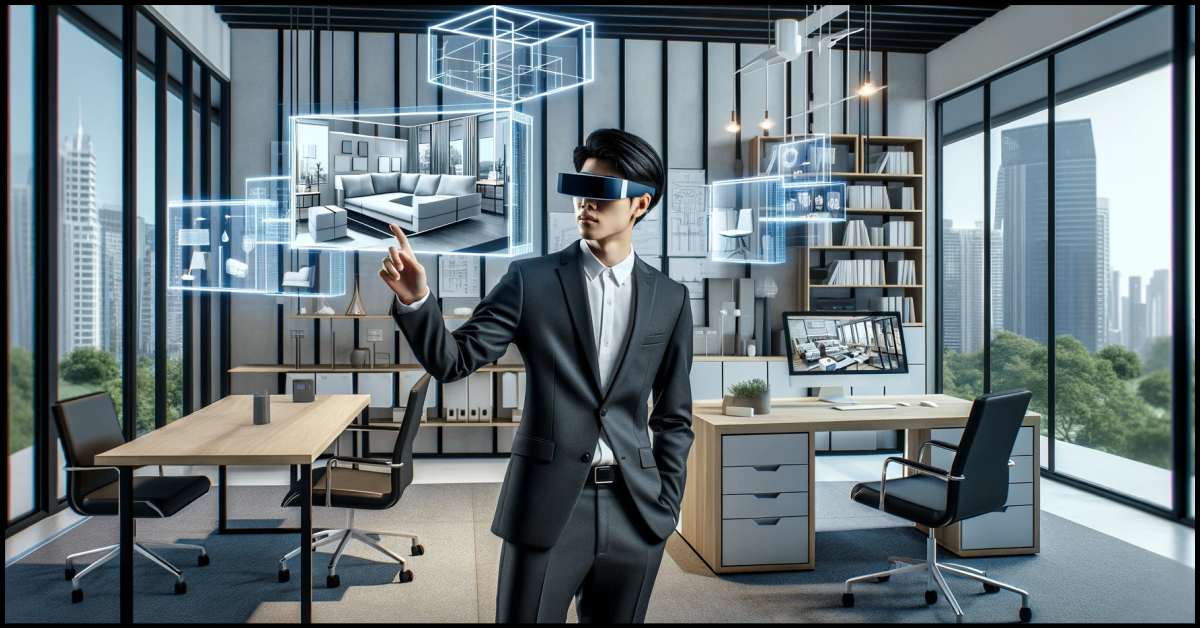
Innovating Design Practices with AR
Augmented reality (AR) emerges as a game-changer in the realm of design, pushing the boundaries of creativity, streamlining design iteration cycles, and fostering user-driven innovation. Let’s delve into how AR is transforming design practices and driving the evolution of the industry toward a future where innovation reigns supreme.
Pushing Creativity Boundaries: AR Experimentation in Design
AR serves as a playground for designers, offering limitless possibilities for creative exploration and experimentation. By overlaying digital content onto the physical world, AR enables designers to push the boundaries of traditional design mediums and explore innovative concepts that were once thought impossible. From surreal architectural environments to fantastical product prototypes, AR fuels imagination and empowers designers to unleash their creativity in ways never before imagined.
Streamlining Iteration Cycles: AR-enabled Rapid Prototyping
In the fast-paced world of design, speed is of the essence. AR accelerates the design iteration process by providing designers with tools for rapid prototyping and visualization. Through AR-enabled virtual mockups and simulations, designers can iterate designs in real time, quickly testing ideas, gathering feedback, and refining concepts on the fly. This agile approach not only saves time and resources but also enables designers to iterate with precision and confidence, resulting in better-designed products and experiences.
User-driven Innovation: AR Feedback Loops Enhancing Design Processes
User feedback is invaluable in the design process, guiding designers towards solutions that resonate with their audience. AR facilitates user-driven design innovation by offering immersive and interactive experiences that allow users to provide feedback in real time. Whether it’s testing product features in a virtual environment or experiencing architectural spaces before they’re built, AR empowers users to actively participate in the design process, shaping products and experiences that meet their needs and preferences.
AR’s Role in Driving Design Evolution and Innovation
As we look towards the future of design, it’s clear that AR will play a central role in driving innovation and shaping the evolution of the industry. By democratizing design tools and empowering creators to explore new frontiers of creativity, AR is ushering in a new era of design excellence. From enhancing user experiences to revolutionizing design practices, AR is redefining the very essence of what it means to design in the digital age, paving the way for a future where innovation knows no bounds.
User Engagement and Experience Enhancement with AR
Augmented reality (AR) is not just reshaping the way we design; it’s revolutionizing how users engage with and experience products and environments. In this chapter, we delve into how AR is creating personalized, interactive experiences, and setting new standards for user engagement and satisfaction in design.
Personalized Experiences: AR Applications Transforming User Engagement
AR applications are transforming passive interactions into dynamic experiences, offering users personalized and interactive engagements that captivate and delight. By leveraging AR technology, designers can tailor experiences to individual preferences, delivering content and interactions that resonate on a personal level. From interactive storytelling to customizable product experiences, AR applications empower users to engage with content in new and meaningful ways, setting the stage for a future where every interaction is unique and immersive.
Virtual Product Try-ons: AR Enhancing Product Demonstrations and Simulations
Gone are the days of traditional product demonstrations and try-ons. With AR, users can now visualize products in their own space, try on virtual garments, experiment with furniture placements, and explore product features in a lifelike environment. AR bridges the gap between imagination and reality, enabling users to make informed decisions with confidence. Whether it’s previewing a new hairstyle or test-driving a virtual car, AR simulations offer a glimpse into the future of experiential shopping and product engagement.
Customer Engagement: AR-driven Solutions Elevating User Satisfaction
Customer engagement is the cornerstone of brand success, and AR-driven design solutions are raising the bar for customer satisfaction. By integrating AR into marketing campaigns, retail experiences, and product interactions, brands can create immersive and memorable experiences that leave a lasting impression on users. From gamified shopping experiences to interactive product tours, AR enhances engagement at every touchpoint, fostering brand loyalty and driving conversions.
AR Impact on Future Design Trends and User Expectations
As AR becomes increasingly integrated into our daily lives, its impact on future design trends and user expectations cannot be overstated. AR-driven experiences are setting new standards for interactivity, personalization, and engagement, shaping the way designers approach product development and user experience design. By staying ahead of the curve and embracing AR as a transformative tool, designers can position themselves at the forefront of innovation and shape the future of design in a digitally driven world.
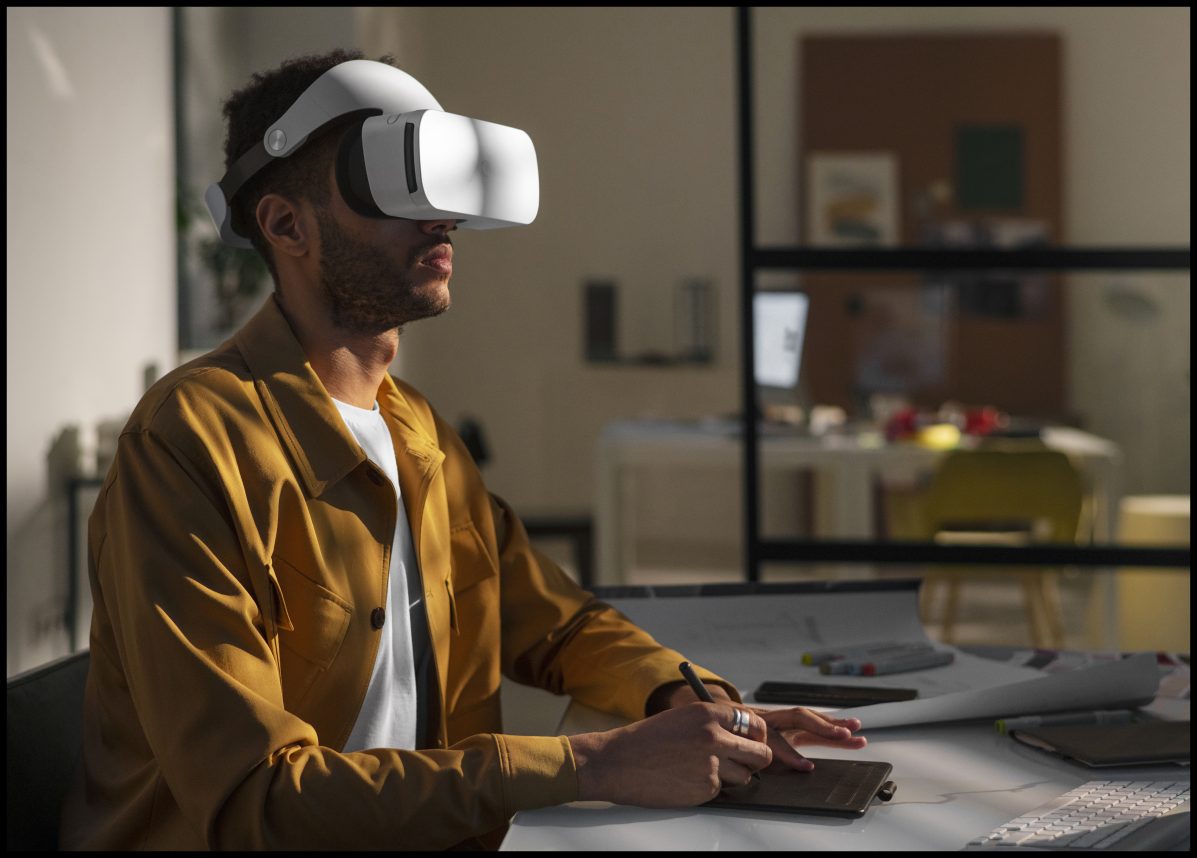
Future Outlook: Augmented Reality as a Catalyst for Design Evolution
As we gaze into the future of design, one thing is abundantly clear: augmented reality (AR) will play a pivotal role in shaping the creative landscape. In this chapter, we delve into the exciting possibilities that lie ahead, as AR emerges as a transformative force driving design evolution toward a future where innovation knows no bounds.
Predicting AR’s Future Trajectory in Design Industries
The trajectory of AR in design industries is poised for exponential growth, with forecasts predicting widespread adoption and integration across various sectors. As AR technologies continue to mature and become more accessible, designers can expect to see a surge in demand for AR-driven solutions, from immersive retail experiences to interactive architectural visualizations. The future of design is bright, with AR paving the way for new possibilities and opportunities for creative expression.
Exploring Emerging AR Technologies: Design Applications and Innovations
Emerging AR technologies hold immense potential to revolutionize design practices and unlock new avenues for innovation. From spatial computing and volumetric displays to gesture recognition and haptic feedback, designers are poised to leverage a vast array of cutting-edge technologies to create immersive and interactive experiences that captivate and delight users. By staying abreast of emerging trends and technologies, designers can position themselves at the forefront of the AR revolution and drive design evolution forward.
Addressing Challenges and Opportunities in AR Adoption in Design
While the future of AR in design is undoubtedly promising, it also presents a unique set of challenges and opportunities. Designers must navigate issues such as privacy concerns, technological limitations, and user acceptance to ensure the successful integration of AR into design practices. However, with challenges come opportunities for innovation and growth. By addressing these challenges head-on and embracing AR as a transformative tool, designers can unlock new avenues for creativity and push the boundaries of what’s possible in design.
Summarizing AR’s Transformative Role in Shaping Design’s Future
In summary, augmented reality (AR) stands at the forefront of a design revolution, offering designers unprecedented opportunities to unleash their creativity and redefine the boundaries of what’s possible. From transforming how designers collaborate and engage with users to driving innovation and optimizing design processes, AR holds the key to unlocking new frontiers of creativity and ushering in a new era of design excellence. As we navigate the ever-evolving landscape of design, let us embrace the augmented reality revolution and chart a course toward a future where creativity knows no bounds.
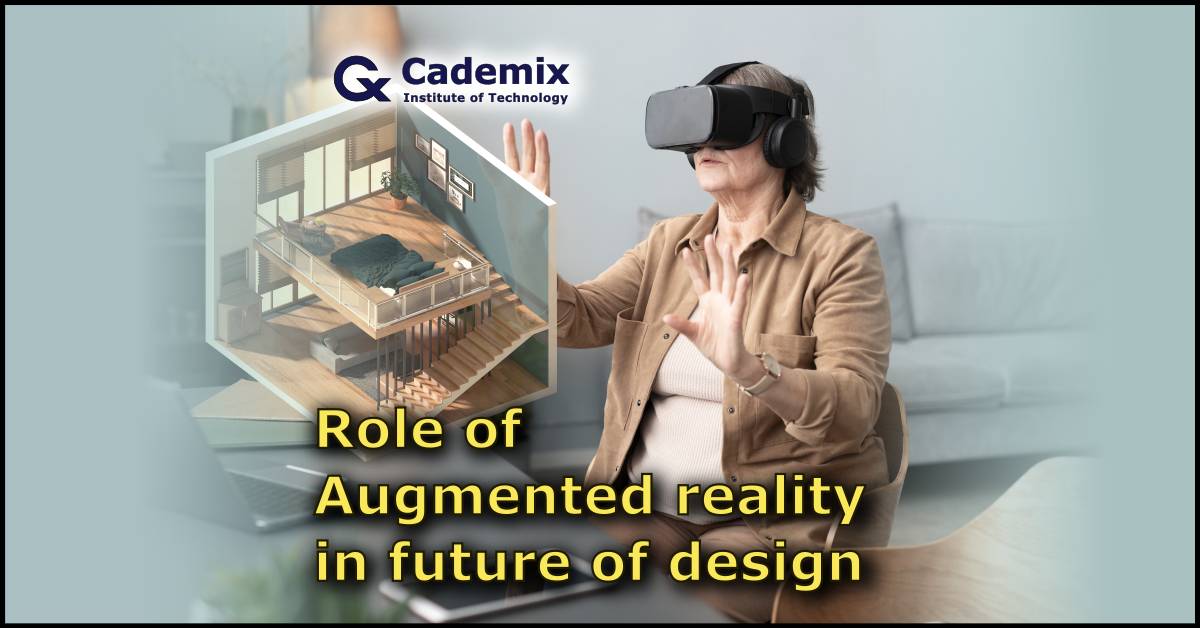
About the Autor
Samareh Ghaem Maghami is an associate professor of technical and interior design at Cadmix Institute of Technology in Austria with a bachelor of fine arts from the Tehran University of Science and Culture. Experience in event planning and event management as a designer and executive for the past 5 years. Self-employed with about 12 years of experience as an interior designer and expert in 3D modeling and architectural programs. She has written several articles about design and technology, one of which is Storyboarding in UI/UX: Roles and How to Do It. In addition, she is currently upgrading her knowledge with the latest knowledge in Austria, studying for a master’s degree in Eco-Design.
Please feel free to contact her if you wish under:
E-mail: sam.gh.maghami@gmail.com
E-mail: samareh.ghaem-maghami@cademix.org
LinkedIn: https://www.linkedin.com/in/samareh-ghaem-maghami
Xing: https://www.xing.com/profile/Samareh_GhaemMaghami

